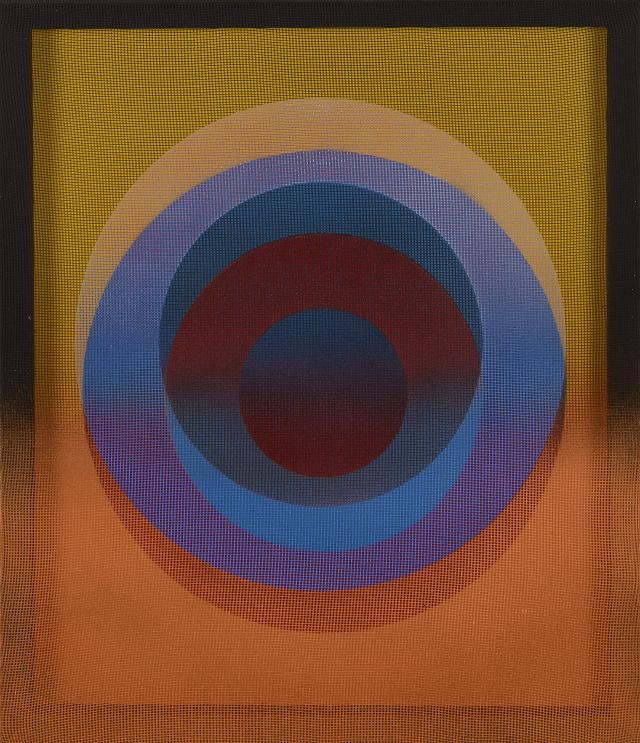In the 1950s, when he was teaching at New York University, Xanti Schawinsky started focusing almost exclusively on his pictorial practice. The artist decompartmentalized the medium so that he could transpose into it his ideas on theatre and performance art.
Favoring the creative process over the final product, his central focus was on the application of color to canvas, which he viewed as an evolving theatrical stage. Through his process-based paintings, he involved the human body in the creation of his works, similarly to Jackson Pollock’s action paintings.
In the 1960s, Schawinsky started a new creative phase through a set of intense, enigmatic, abstract paintings entitled Eclipses, which were inspired by a total eclipse of the sun he experienced in the Canadian mountains. Its memory persisted in the subtle overlapping of several colored circles that gave rise to the Spheras series begun in 1967, the artist’s last significant cycle of abstract paintings, to which the two works in the Collection Pictet belong.
Inspired by op art – then an emergent art genre that made use of illusions created by optical effects – these compositions were created by stretching one or several layers of gauze over the canvas, like so many superimposed pictorial surfaces on which the artist painted complementary images of circles or spheres.
The viewer is invited to move around the canvas to explore an intriguing and innovative optical experiment. The colors and their different degrees of opacity on the fabric create an effect of depth and the illusion of a three-dimensional painting whose shape evolves dynamically according to the point of view.
Though it may appear to represent a stylistic break, Schawinsky’s late work can be considered a logical extension of his work at the Bauhaus and then at Black Mountain College. It is also another expression of the artist’s fundamental interests in spatial representation and his ideas about surface segmentation, while crystallizing his considerable contribution to the evolution of art techniques.
Favoring the creative process over the final product, his central focus was on the application of color to canvas, which he viewed as an evolving theatrical stage. Through his process-based paintings, he involved the human body in the creation of his works, similarly to Jackson Pollock’s action paintings.
In the 1960s, Schawinsky started a new creative phase through a set of intense, enigmatic, abstract paintings entitled Eclipses, which were inspired by a total eclipse of the sun he experienced in the Canadian mountains. Its memory persisted in the subtle overlapping of several colored circles that gave rise to the Spheras series begun in 1967, the artist’s last significant cycle of abstract paintings, to which the two works in the Collection Pictet belong.
Inspired by op art – then an emergent art genre that made use of illusions created by optical effects – these compositions were created by stretching one or several layers of gauze over the canvas, like so many superimposed pictorial surfaces on which the artist painted complementary images of circles or spheres.
The viewer is invited to move around the canvas to explore an intriguing and innovative optical experiment. The colors and their different degrees of opacity on the fabric create an effect of depth and the illusion of a three-dimensional painting whose shape evolves dynamically according to the point of view.
Though it may appear to represent a stylistic break, Schawinsky’s late work can be considered a logical extension of his work at the Bauhaus and then at Black Mountain College. It is also another expression of the artist’s fundamental interests in spatial representation and his ideas about surface segmentation, while crystallizing his considerable contribution to the evolution of art techniques.
